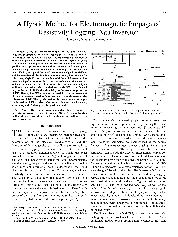摘要
Using an inverse technique for the array electro-magnetic propagated resistivity logging (EPRL) data, a fine interpretation can be obtained about the resistivity distribution of an invaded profile. Generally, the Gauss-Newton algorithm (GN) is an efficient technique for the inverse problems; however, as a gradient-type optimization method, its accuracy and convergence depend strongly on the initial value. Even though this problem can I)e avoided by using a differential evolutionary algorithm (DE) as a global search optimization, it is computationally less efficient. In this paper, a hybrid inversion method of differential evolution has been developed to remove the strong dependence of the accuracy and convergence on the initial value. In this new method, an additional operation, which is designed with GN, is performed only to the best individual with a delay in the evolution processes of DE. Hence, the GN operation is used for the improvement of the convergence speed without leading to any decrease of the robustness of DE. The hybrid method is then extended to apply the inversion of EPRL data. Our results demonstrate its speed, steadiness, and efficiency of this hybrid method.
- 出版日期2007-3
- 单位燕山大学
